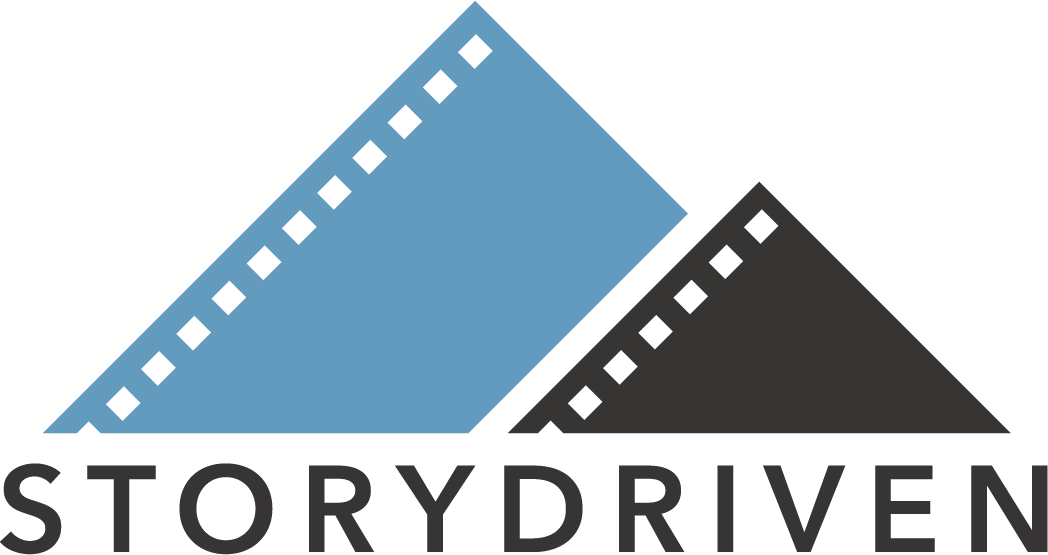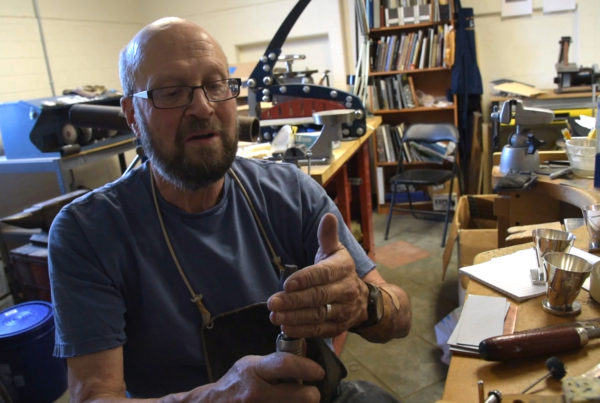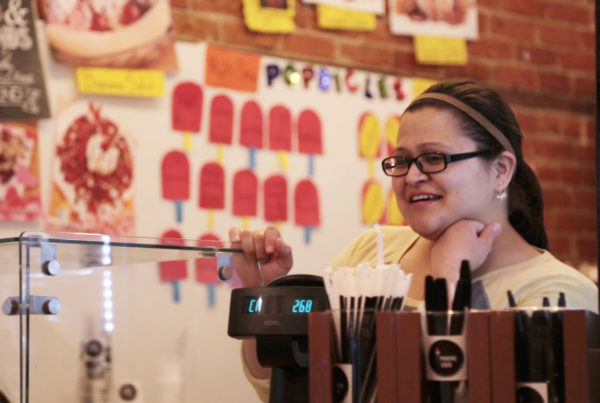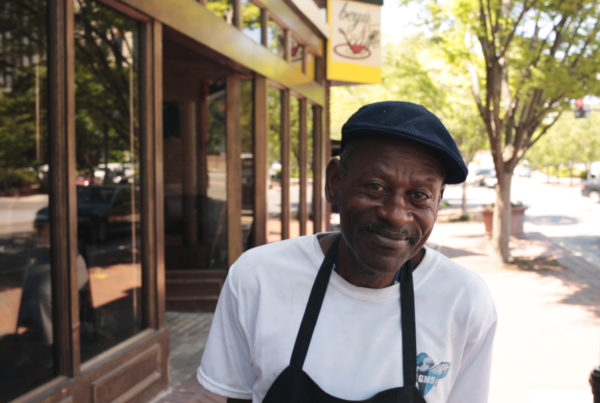HEARING THIS STORY
“It depends what’s happening. I feel it in my body. It feels like usually a lot of tension in my face, in my chest. Often it feels like I can’t draw a full breath.” Laura describes. ”There’s a like a rock somewhere in my diaphragm. It’s muscular tension; feels like a rock. I’m conscious that I’m just not breathing. And I teach people to do this for a living you know.”
About 2 years ago, Laura left her abusive marriage. Her decision meant defying her ex-husband and abuser, making herself more vulnerable to his anger, forsaking financial security and a reliable place to live. Since she left, she has been staying with friends because she cannot afford an apartment. She’s had to take out a restraining order against her abuser for stalking her. These conditions have introduced her to a new battle – one against post-traumatic stress disorder and depression. Her trauma can make it unbearable to get up in the morning, maintain relationships, and be in loud and crowded spaces.
I only knew some details about Laura’s experience with trauma going into our coffee date. I didn’t know that she had asked us to meet at 3 pm on a weekday because that is when Cocoa Cinnamon is the least crowded. I didn’t know that she chose our seats in the corner so that she could have her back against the wall and see all sudden movements.
“It’s hard to understand when you’re fairly neurotypical,” Laura told me. “You feel like you have to be on high alert all the time… And no amount of understanding that you are safe can undo that for now.”
Before we sat down to talk, I didn’t know that sometimes, she can’t lift herself off of her bed, much less lift her head high when she meets someone new.
The trauma cripples Laura mentally and emotionally, telling her she isn’t good enough or strong enough to take on the simplest tasks. It’s also manifested physically; her muscles tense up and she experiences symptoms of panic and anxiety.
During the production of this video, and as I got to know Laura better, I grew in awe of how she sets aside her fears and discomfort to teach yoga, knowing that it will provide healing for others and for herself.
MAKING THIS VIDEO
Laura and I met up quite a few times after that first meeting at Cocoa Cinnamon. Before we did any filming, we sat down for an audio interview. We talked first about the boundaries of our conversation. I didn’t want her to feel pressured into going back to any dark places. She was wonderfully open and shared the depths of her reality with me.
I’m grateful that she trusted me with that vulnerability, especially since I was just starting out at StoryDriven. This would be the first video I ever shot and produced. I had no trouble interviewing and even had some experience editing, but before this project, I had gotten my hands on a DSLR video cameras less than a handful of times.
So on the first day of filming at Laura’s Yoga for Veterans class at the VA Hospital, I was far out of my comfort zone. I had visited the Yoga for Veterans class once without any equipment to introduce myself, get to know the space, and make sure the video project was okay with everyone. I had practiced using the camera around our office, but when it was time to set up the monopod, adjust settings, and press record, I was not ready.
The camera felt 10 pounds heavier and the detailed shot list I had carefully prepared was suddenly undecipherable. Because this was a class for trauma survivors, I was tiptoeing around everyone, afraid of getting too close for their comfort and triggering traumatic experiences. I wandered around the room aimlessly, cut too many shots way too early, and ended up coming back with little scope variety in my clips. Basically, I did the opposite of what everyone had taught me.
I felt defeated when I watched the footage that I had gathered that day. The visuals and the purpose of the shots were dark and fuzzy. I couldn’t visualize how this project would come together.
The following week, I met Laura before her 9:00 am class at the Durham Yoga Center to film her private morning routine, and that experience was much better. I felt proud of the footage that I had been able to gather in a more controlled environment — but only to return to the VA the next day and feel overwhelmed all over again.
I wanted to create a good video product for Laura; one that could empower her and her students by highlighting her work. But I was letting my insecurity and fear of failure get in the way of a successful outcome. I just needed to move past my hesitation and kick those beginner’s jitters to the curb.
This process has taught me that being a successful visual storyteller requires setting aside equivocations. I told myself: “I don’t know how to use this camera,” and “I shouldn’t disturb anyone.” In fact, I had been taught how to use the camera, and I had gotten permission from everyone in the class. Of course, I needed (and still need) so much more practice shooting and was right to be mindful of the nuance of working with trauma survivors. Still, I ignored the importance of trust in myself and in others to decide they want their story told. That trust makes for a more empowering experience for everyone involved.
For those of you just starting out in video production, maybe you know what I mean. But it’s much easier said than done. I’m starting a new project this week that requires a good chunk of filming, so it’s time to put this lesson into practice.
